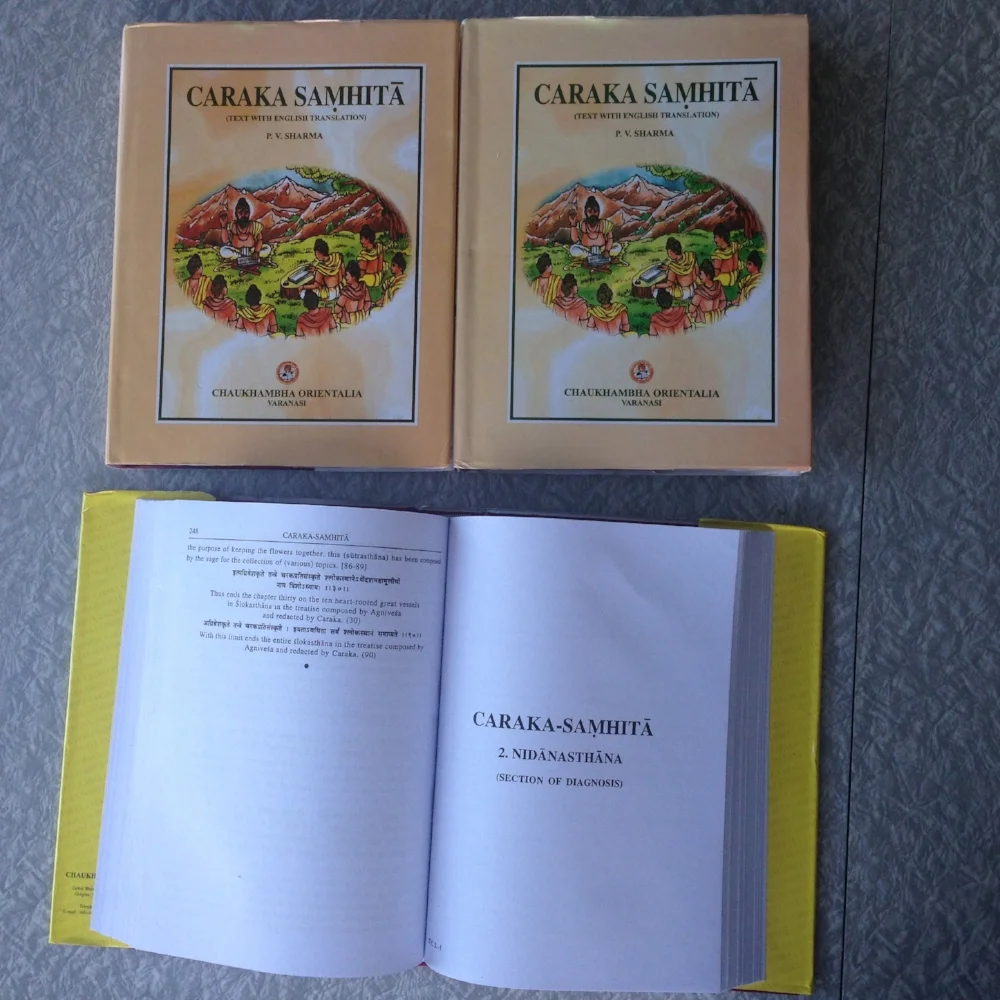History and Origin of Ayurveda
/Lord Dhanvantari
Lord Dhanvantari is the god of Ayurveda. He is considered the deity of Ayurvedic medicine. He is shown in the picture above holding four items which represent Ayurvedic medicine:
Amrit or the nectar of life
a medical text or sometimes a conch shell
a herb or a chakra a spear of light from Lord Vishnu
a leech which is commonly used in the Panchakarma practice of rakta moksha or bloodletting
The Vedas
Ayurveda is an Indian medical science that is over 5,000 years old. Some consider it to be the oldest form of medicine in the world. “Ayur” means life and “veda” means science or wisdom. So Ayurveda means the science of life or the wisdom of life. In fact Ayurveda is first mentioned in the great historical books of India called the Vedas which were compiled around 1200 B.C. The Vedas are considered “bodies of knowledge” or “scriptures of knowledge”. They include the Rig Veda, the Yajur Veda, the Athara Veda and the Sama Veda. These Vedas are considered the oldest recorded knowledge in human history. There are also four secondary Vedas called Upa-Vedas, which were developed from one of the main Vedas. Ayurveda is considered an Upa-Veda which is believed to be derived from the Athara Veda although some scholars believe its origin was from the Rig Veda.
The Great Ayurvedic Texts
There are great Ayurvedic texts that were formulated as early as 1000 B.C. and are still studied today by Ayurvedic physicians. They are the Charaka Samhita, the Sushruta Samhita and the Ashtanga Hridhaya and the Ashtanga Sangraha. These are called the Brihat Trayi or the great triad of Ayurvedic texts. These works are recognized as the foundations of Ayurvedic medicine.
The great Ayurvedic Physicians Charaka and Sushruta then interpreted the Ayurvedic information from the Vedas and each wrote Samhitas which are collections of medical teachings or sacred texts. These Samhitas are written as stanzas of prose and Ayurvedic Physicians still memorize and lyrically recite them.
The Charaka Samhita was formulated around 1000 B.C. by the Ayurvedic physician Charaka of Kashmir and written down in 760 B.C. It is unknown if the book was written exclusively by Charaka or by a group of his students. The Charaka Samhita discusses internal medicine, the five subdosha of Vata (prana, udana, apana, vyana, samana), anatomical dissection and skin analysis.
The Sushruta Samhita was written around 660 B.C. by the Ayurvedic surgeon, Sushruta of Varanasi. These texts focuses on Ayurvedic surgery as well as the importance of the blood or rakta. The Sushruta Samhita also first discusses the five subdosha of Pitta: pāchaka, rañjaka, sādhaka, ālochaka, and bhrājaka. This text also outlines the definition of health according to Ayurveda. Check out the post “What Is Ayurveda?” to learn more.
The Ashtanga Hridaya and the Ashtanga Sangraha were written by Vagbhata of Sind, in northwest India. These texts first outline the five subdosha of Kapha: kledaka, avalambaka, bodhaka, tarpaka, and shleshaka.
As you can see, the study, philosophy and medicine of Ayurveda is ancient. The recommendations are time tested. Ayurvedic physicians, practitioners and counselors are taught from the same texts and that has been throughout time. If you are interested in learning more about this Ayurvedic tradition and how it can benefit you, schedule a session.



